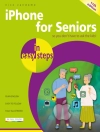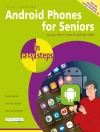We may consider technology as the set of tools, both hardware and software, that help us improve our performance in di?erent working (and playing) – cations; it includes all the man-made objects from paper to the latest audio book. Information technology helps to use, edit, share, and exchange kno- edge, intheformofdocuments-textual, acoustic, andpictorial-quicklyand e?ciently. E. D. Hirsch, Jr. pointed out that literate people in every society and every culture share a body of knowledge that enables them to commu- cate with each other and make sense of the world around them. The kinds of things a literate person knows vary from society to society and from era to era, so there is no absolute de?nition of literacy; the same holds for computer literacy. We may look at technology literacy from three di?erent dimensions: capabilities, knowledge, and ways of thinking and acting. According to this scheme, such dimensions can be placed along a continuum – from low to high, limited to extensive, and poorly developed to well developed. In such a thr- dimensional(3D)space, arethedi?erentproductsandgadgetsinoureveryday life, like the i Pod, that are extensively developed, and have high-level ca- bilities but require little knowledge to make them work. Conversely, a CAD software package has low capabilities since it is a specialized application, and extensive knowledge is required to use it. These ways of thinking and a- ing must be well developed. There are di?erent views on which computing platform will encompass others existing one.
Alessio Malizia
Mobile 3D Graphics [PDF ebook]
Mobile 3D Graphics [PDF ebook]
Acquista questo ebook e ricevine 1 in più GRATIS!
Lingua Inglese ● Formato PDF ● ISBN 9781846286605 ● Casa editrice Springer London ● Pubblicato 2006 ● Scaricabile 6 volte ● Moneta EUR ● ID 6584106 ● Protezione dalla copia Adobe DRM
Richiede un lettore di ebook compatibile con DRM












